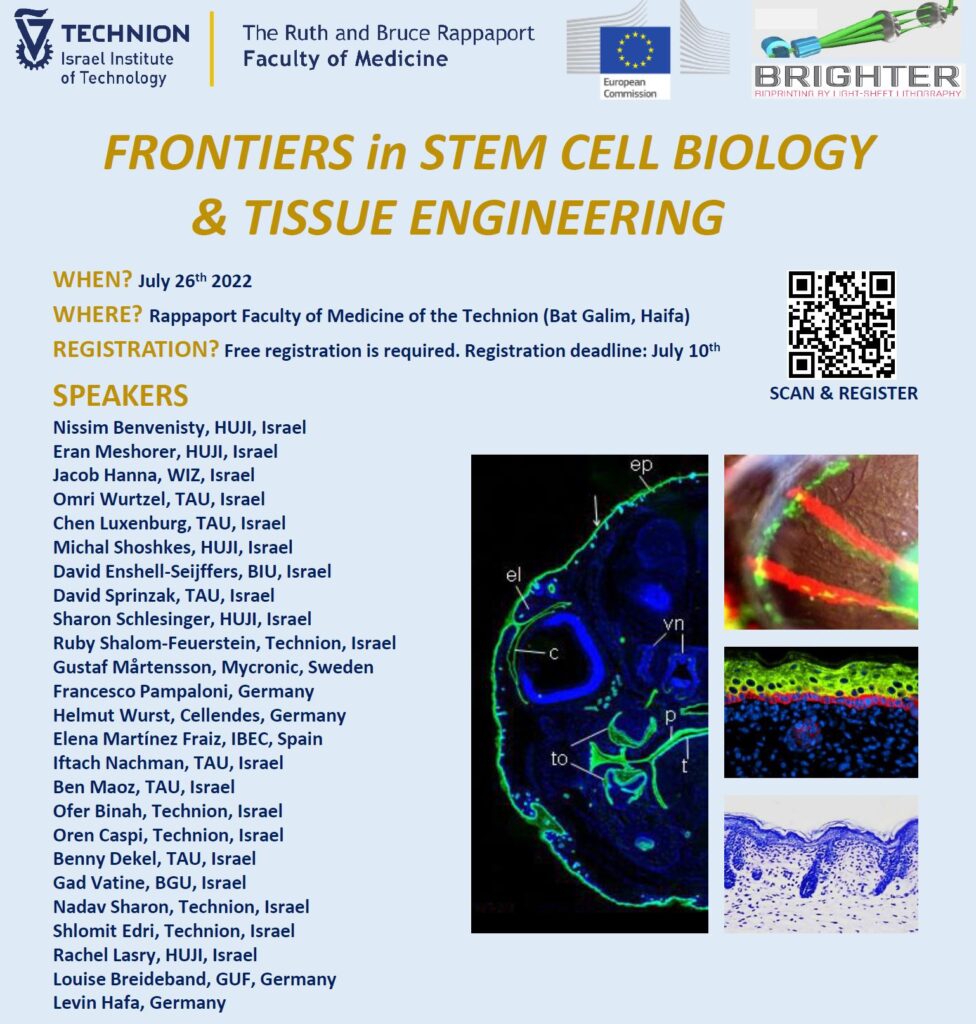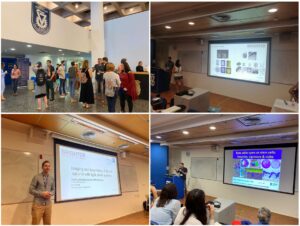This week, the Faculty of Medicine of Technion, the Israel Institute of Technology welcomed the workshop “Frontiers in Stem Cell Biology & Tissue Engineering”, organized by the BRIGHTER project. Local and international renowned speakers covered the last advances in stem cells biology with emphasis on disease modelling and bioengineering.

During the 26th of July 2022, Haifa, in Israel, was the perfect place where several renowned researchers exchanged about Stem Cell Biology & Tissue Engineering. The BRIGHTER workshop “Frontiers in Stem Cell Biology & Tissue Engineering” could fortunately be held as an “in person” meeting after the pandemic, what greatly contributed to create an atmosphere of discussion and an ideal environment to share and acquire forefront knowledge in this topic.
Stem cells were first discovered in the 1950s-60s, and since researchers placed them at the top of the cellular differentiation pyramid, they were the object of uncountable research works that tried to understand their properties and regulatory mechanisms. The aim of this workshop was to contribute to this field summarizing the last advances in stem cells biology, with emphasis on subjects such as disease modelling and bioengineering. A wide range of topics were covered in the program, going from pluripotent and adult stem cells, the influence of the niche mechanobiology, cutting edge technologies of tissue modelling including advanced bioengineering and 3D bioprinting, individual cell imaging and genome-wide single cell analysis.
The event was organized by a BRIGHTER committee composed by one member of each consortium institution: E. Martínez (IBEC), G. Mårtensson (Mycronic), F. Pampaloni (GUF), H. Wurst (Cellendes) and R. Shalom Feuerstein (TECHNION). Moreover, some other BRIGHTER researchers were also there and could present their work. The workshop was divided in five sessions that grouped researchers talks in the following subjects: Pluripotency and reprograming; Development and adult stem cell niches; Advanced modelling with light sheet systems; Organoid and disease modelling; and Advanced modelling of morphogenesis and pathogenesis.

In this context, BRIGHTER researchers shared with the scientific community the core of the project: the development of a light sheet microscope based bioengineering technology that will allow high resolution modelling of complex stem cell niches and tissue structures with 3D tuneable matrix rigidities, while facilitating imaging individual stem cells in real time. Five talks by project members shaded light on this forefront topic:
Ruby Shalom-Feuerstein: “Eye open on stem cells and their niche”
Gustaf Mårtensson & Robert Eklund: “Shifting focus: moving existing technology between application spaces”
Helmut Wurst: “Photocrosslinkable Biomimetic Hydrogels Based on the Thiol-ene Chemistry”
Louise Breideband & Levin Hafa: “Imaging and bio-printing of 3D cell cultures with light sheet systems”
Elena Martínez Fraiz: “Development of biomimetic models of tissue: guiding cellular self-organization through biofabrication techniques”
The workshop was a success and received more than 100 participants from different countries.
BRIGHTER project is funded by FET-open program from the European Commission under the grant agreement nº 828931.